
The Chicago, Milwaukee, St. Paul and Pacific Railroad (ACMStP&P), better known as the Milwaukee Road, was a Class I railroad that operated in the Midwest and Northwest of the United States from 1847 until 1986.

The City of Denver was a streamlined passenger train operated by the Union Pacific Railroad between Chicago, Illinois, and Denver, Colorado. It operated between 1936 and 1971. From 1936–1955 the Chicago and North Western Railway handled the train east of Omaha, Nebraska; the Chicago, Milwaukee, St. Paul and Pacific Railroad handled it thereafter. The train was the fastest long-distance train in the United States when it debuted in 1936, covering 1,048 miles (1,687 km) in 16 hours. For almost its entire career its principal competitor was the Chicago, Burlington and Quincy Railroad's Denver Zephyr. When Amtrak assumed operation of most intercity trains in the United States in 1971, it discontinued the City of Denver, preferring to use the Burlington's route between Chicago and Denver.

The Hiawathas were a fleet of named passenger trains operated by the Chicago, Milwaukee, St. Paul and Pacific Railroad between Chicago and various destinations in the Midwest and Western United States. The most notable of these trains was the original Twin Cities Hiawatha, which served the Twin Cities in Minnesota. The train was named for the epic poem The Song of Hiawatha by Henry Wadsworth Longfellow. The current Amtrak Hiawatha train is directly descended from the Milwaukee Road trains.

A dome car is a type of railway passenger car that has a glass dome on the top of the car where passengers can ride and see in all directions around the train. It also can include features of a coach, lounge car, dining car, sleeping car or observation. Beginning in 1945, dome cars were primarily used in the United States and Canada, though a small number were constructed in Europe for Trans Europ Express service.
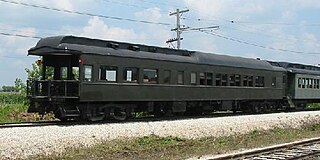
An observation car/carriage/coach is a type of railroad passenger car, generally operated in a passenger train as the rearmost carriage, with windows or a platform on the rear of the car for passengers' viewing pleasure. The cars were nearly universally removed from service on American railroads beginning in the 1950s as a cost-cutting measure in order to eliminate the need to "turn" the trains when operating out of stub-end terminals.

The North Coast Limited was a named passenger train operated by the Northern Pacific Railway between Chicago and Seattle via Bismarck, North Dakota. It started on April 29, 1900, and continued as a Burlington Northern Railroad train after the merger on March 2, 1970 with Great Northern Railway and the Chicago, Burlington and Quincy Railroad. The next year, it ceased operations after the trains which left their originating stations on April 30, 1971, the day before Amtrak began service, arrived at their destinations.

The 400 was a named passenger train operated by the Chicago and North Western Railway between Chicago and Saint Paul, with a final stop in Minneapolis. The train took its name from the schedule of 400 miles between the cities in 400 minutes, and was also a nod to "The Four Hundred Club", a term coined by Ward McAllister to refer to the social elite of New York City in the late 19th century. It was an express train with limited stops between Chicago and the Twin Cities. The "400" ran from 1935 to 1963 on the Chicago to Twin Cities route. The C&NW later named their other passenger trains using the number "400".

The Olympian and its successor the Olympian Hiawatha were passenger trains operated by the Chicago, Milwaukee, St. Paul and Pacific Railroad between Chicago and the Pacific Northwest. The Olympian operated from 1911 to 1947 and was, along with its running mate the Columbian, the first all-steel train to operate in the Pacific Northwest. The streamlined Olympian Hiawatha operated from 1947 to 1961 and was one of several Milwaukee Road trains to carry the name "Hiawatha". The Olympian Hiawatha was designed by industrial designer Brooks Stevens and included the distinctive glassed-in "Skytop" observation-sleeping cars. It later featured full-length "Super Dome" cars.

The Columbian was a named passenger train operated by the Chicago, Milwaukee, St. Paul and Pacific Railroad between Chicago, Illinois, and Seattle/Tacoma, Washington. The westbound train was Milwaukee Road train #17, and the eastbound train was train #18. It was launched on Monday, May 29, 1911. The same day, the faster, limited-stop and more luxurious Olympian also launched. These were the first passenger trains to take advantage of the Milwaukee Road Pacific Extension, which had opened to freight in 1909.
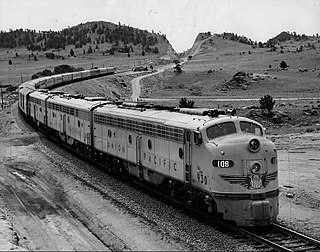
The Challengers were named passenger trains on the Union Pacific Railroad and the Chicago and North Western Railway. The economy service ran between Chicago, Illinois, and the West Coast of the United States. The trains had full Pullman service and coach seating and were an attempt to draw Depression-Era riders back to the rails. Food service was advertised as "three meals for under a dollar a day."
Brooks Stevens, Inc., also known as Brooks Stevens Design Associates and Brooks Stevens Design, is a product development firm headquartered in Milwaukee, Wisconsin. Brooks Stevens's services included research, industrial design, engineering, prototyping, project management,and graphic design.

The Twin Cities Hiawatha, often just Hiawatha, was a named passenger train operated by the Chicago, Milwaukee, St. Paul and Pacific Railroad, and traveled from Chicago to the Twin Cities. The original train takes its name from the epic poem The Song of Hiawatha by Henry Wadsworth Longfellow. There are a number of Hiawatha-themed names within the city of Minneapolis, the terminus of the original train. The first Hiawatha ran in 1935; in 1939 the Milwaukee Road introduced a second daily trip between Chicago and Minneapolis. The two trains were known as the Morning Hiawatha and Afternoon Hiawatha, or sometimes the AM Twin Cities Hiawatha and PM Twin Cities Hiawatha. The Milwaukee Road discontinued the Afternoon Hiawatha in 1970 while the Morning Hiawatha continued running until the formation of Amtrak in 1971.
The Wisconsin Great Northern Railroad operates a historic train line centered in Trego, Wisconsin on 26 miles of track, between Spooner, Wisconsin and Springbrook, Wisconsin. It was founded on April 1, 1997. The line runs dinner trains, bed and breakfast trains, and scenic sight seeing tours.
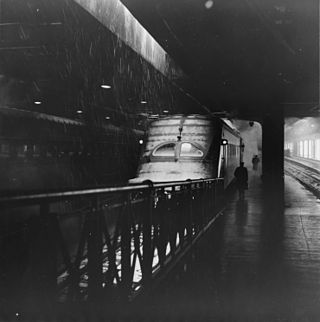
The North Woods Hiawatha was a streamlined passenger train operated by the Chicago, Milwaukee, St. Paul and Pacific Railroad between New Lisbon and Minocqua, Wisconsin. It operated from 1936 until 1956. The North Woods Hiawatha was the first new route to adopt the Hiawatha brand.

The Beaver Tails were a fleet of streamlined parlor-observation passenger cars built by the Chicago, Milwaukee, St. Paul and Pacific Railroad between 1934–1938. They served as the observation cars on the famous Hiawatha trains from 1935 until 1948, when they were displaced by the new Skytop Lounge. The cars' name was derived from the distinctive flat, sloped rear of the car.

The Super Dome was a Dome car built by Pullman-Standard for the Milwaukee Road in 1952. The ten Super Domes were the first full-length dome cars in revenue service, first operating on the Olympian Hiawatha and Twin Cities Hiawatha in late 1952. Although a mixed blessing in passenger use, the cars garnered much publicity for the Milwaukee Road and several remain in operation.
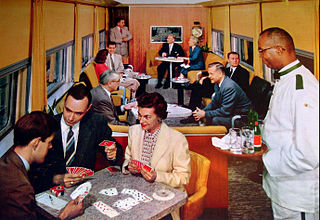
The Mainstreeter was a passenger train on the Northern Pacific Railway between Chicago, Illinois, and the Pacific Northwest from 1952 to 1971. When the North Coast Limited got a faster schedule in November 1952 the Mainstreeter was introduced, running roughly on the North Coast's old schedule but via Helena. Unlike the North Coast the Mainstreeter was not a true streamliner as it carried both new lightweight and traditional heavyweight coaches. It replaced another train, the Alaskan. The name referred to the Northern Pacific's slogan, "Main Street of the Northwest." While Amtrak did not retain the train as part of its initial route structure, it created a new train named the North Coast Hiawatha several months afterwards. That train ran until 1979.
The Chippewa consisting of mostly conventional components, and later known as the Chippewa-Hiawatha, with a streamlined consist was a passenger train operated by the Chicago, Milwaukee, St. Paul and Pacific Railroad between Chicago, Illinois and Michigan's Upper Peninsula. It operated from 1937 to 1960. The Chippewa-Hiawatha was one of several regional trains to carry the "Hiawatha" brand.

The Varsity was a passenger train operated by the Chicago, Milwaukee, St. Paul & Pacific Railroad over a 140-mile route between Chicago and Madison, Wisconsin.
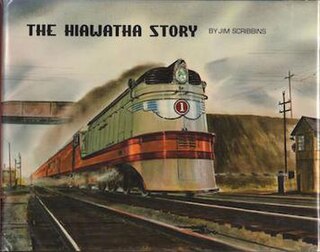
The Hiawatha Story is a 1970 non-fiction book on railroad history by Jim Scribbins, then an employee of the Chicago, Milwaukee, St. Paul and Pacific Railroad. The book covers the history of the Milwaukee Road's most famous passenger train, the Hiawatha, from its creation in 1934–1935 up through 1970. The book also covered the various other Milwaukee Road trains which carried the name "Hiawatha."




















